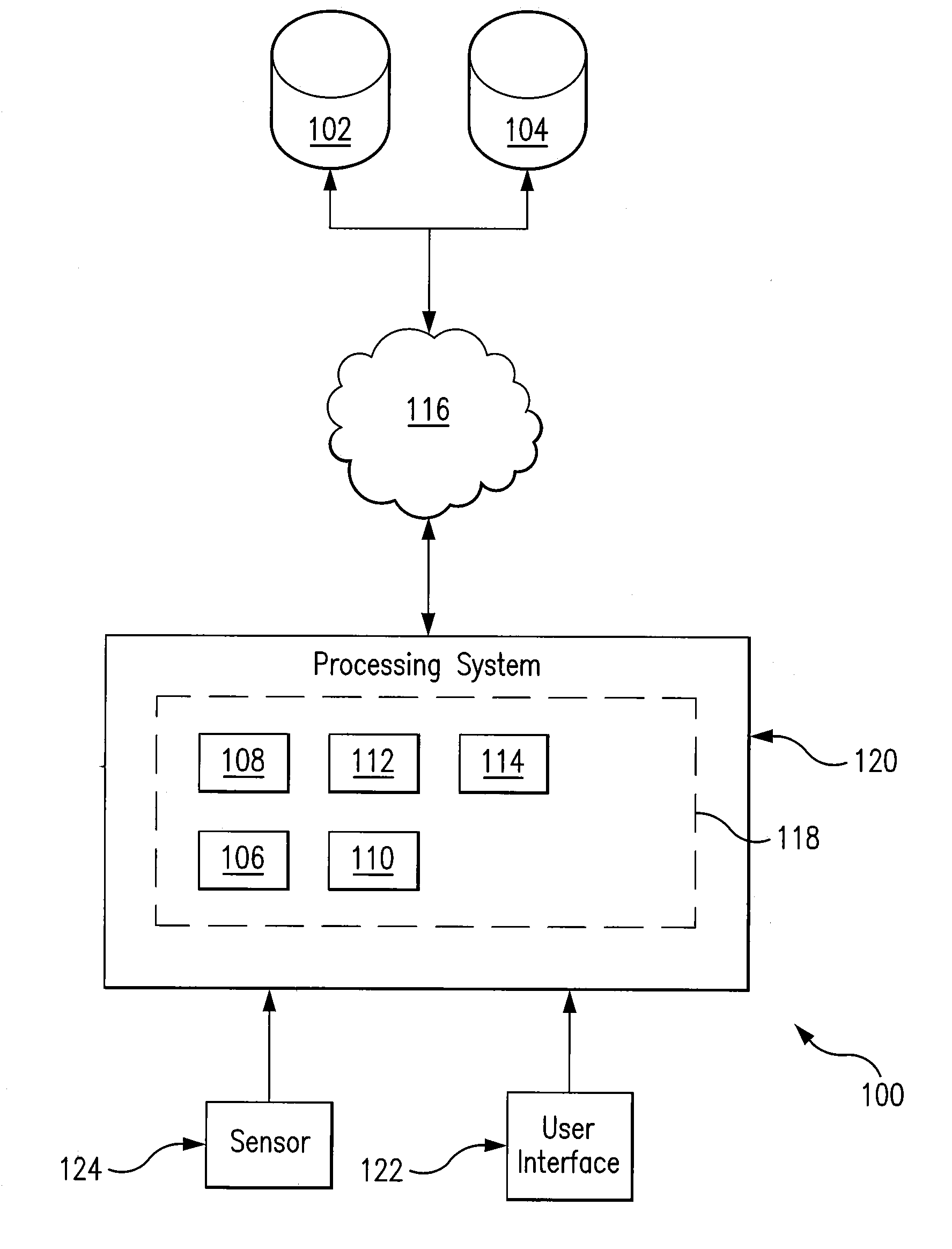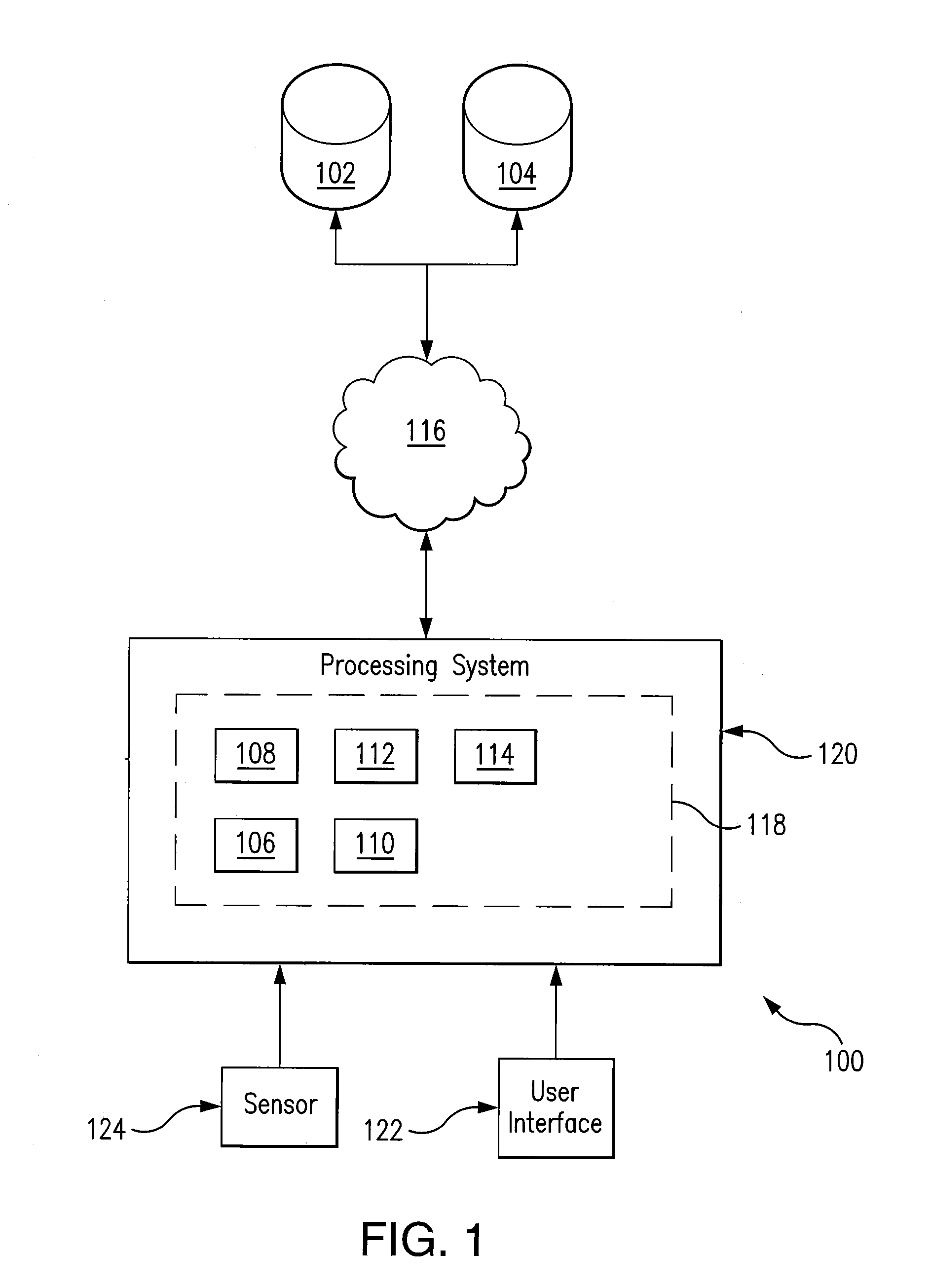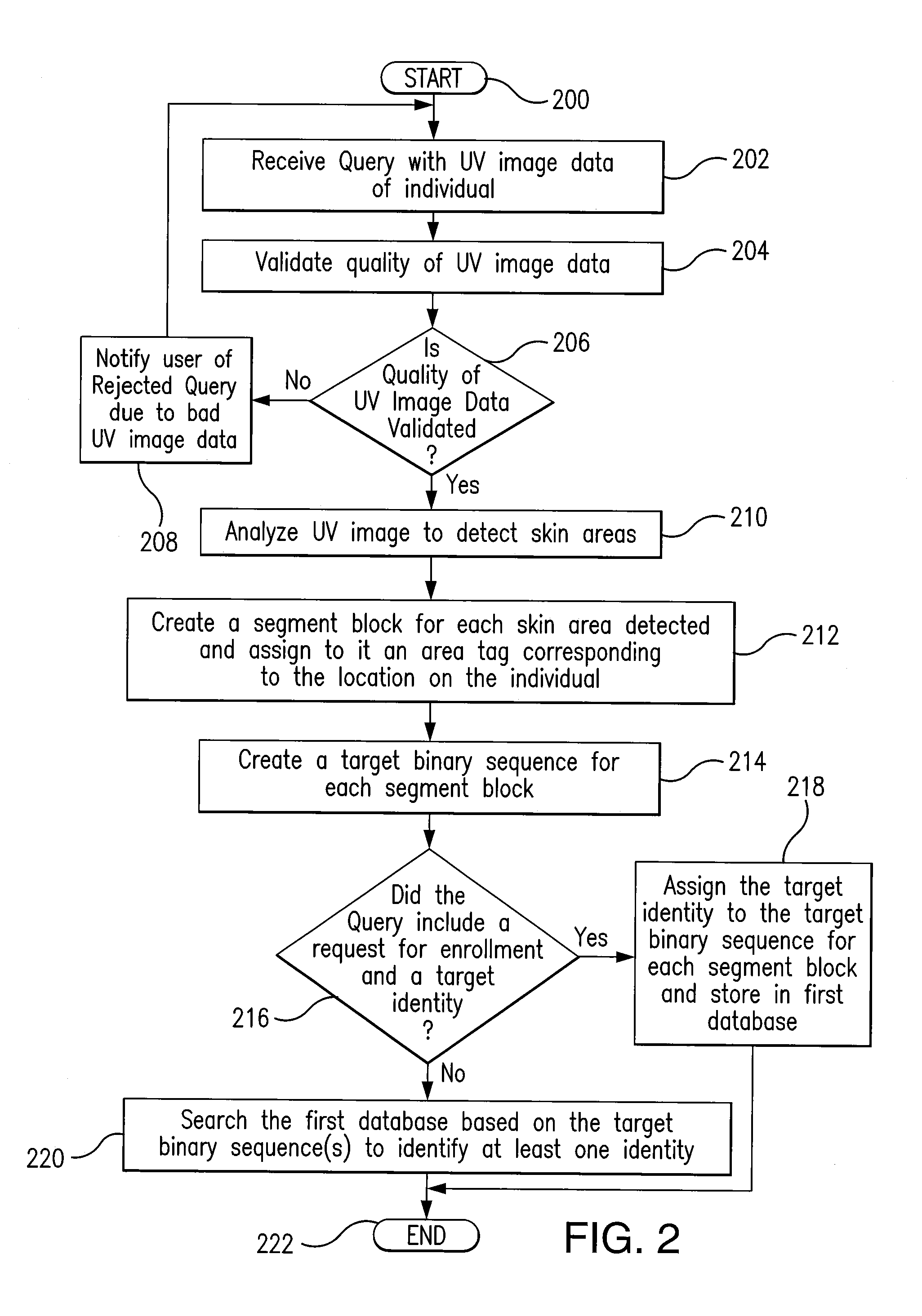System and Method for Biometric Identification using Ultraviolet (UV) Image Data
a biometric identification and image data technology, applied in the field of biometric identification, can solve the problems of insufficient detection accuracy, inability to detect at a distance, and insufficient use of sensors currently being sensed on target individuals by today's systems, so as to alleviate the inherent problems and improve the accuracy. the effect of accuracy and efficiency
- Summary
- Abstract
- Description
- Claims
- Application Information
AI Technical Summary
Benefits of technology
Problems solved by technology
Method used
Image
Examples
Embodiment Construction
[0017]Referring to FIG. 1, a block diagram can be seen illustrating at a high level the various components of one exemplary embodiment of a system 100 providing for the biometric identification of a target individual based on a query having UV image data of the target individual in accordance with the teachings of the present disclosure. In the particular embodiment of FIG. 1, system 100 is comprised of a plurality of databases (namely, a first database 102 and a second database 104) in communication with and accessible by a plurality of modules (namely, a query module 106, a detection module 108, a sequence module 110, a match module 112, and an enrollment module 114) via a communication path 116.
[0018]In the particular embodiment of FIG. 1, the modules 106-114 are generally implemented in the form of one or more software modules residing in memory 118 associated with a processing system 120. The modules 106-114 can be written as a software program in any appropriate computer langu...
PUM
 Login to View More
Login to View More Abstract
Description
Claims
Application Information
 Login to View More
Login to View More - R&D
- Intellectual Property
- Life Sciences
- Materials
- Tech Scout
- Unparalleled Data Quality
- Higher Quality Content
- 60% Fewer Hallucinations
Browse by: Latest US Patents, China's latest patents, Technical Efficacy Thesaurus, Application Domain, Technology Topic, Popular Technical Reports.
© 2025 PatSnap. All rights reserved.Legal|Privacy policy|Modern Slavery Act Transparency Statement|Sitemap|About US| Contact US: help@patsnap.com



